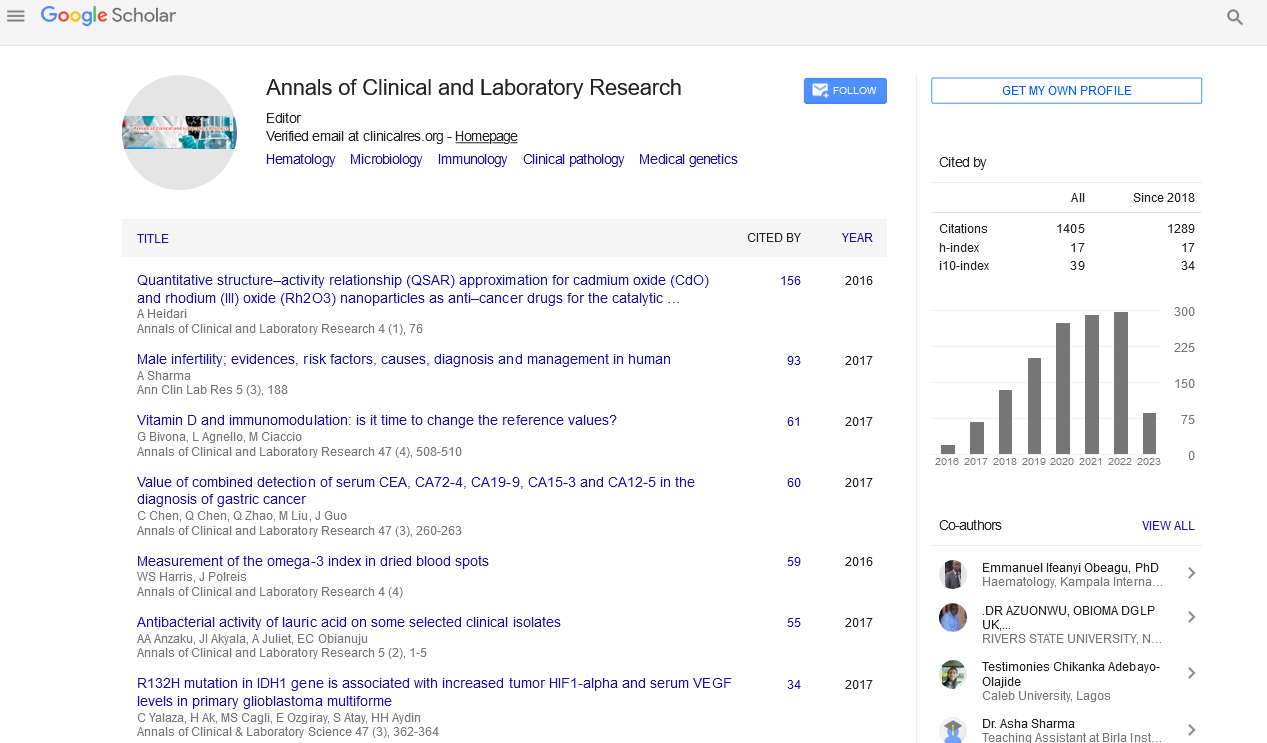Perspective - (2024) Volume 12, Issue 1
Cluster Analysis and Implications for Clinical Management
Mfouth Kemajou*
Department of Pharmacology, Georgetown University, USA
*Correspondence:
Mfouth Kemajou, Department of Pharmacology, Georgetown University,
USA,
Email:
Received: 05-Nov-2023, Manuscript No. IPACLR-23-14319;
Editor assigned: 08-Nov-2023, Pre QC No. IPACLR-23-14319 (PQ);
Reviewed: 05-Jan-2024, QC No. IPACLR-23-14319;
Revised: 22-Jan-2025, Manuscript No. IPACLR-23-14319 (R);
Published:
29-Jan-2025
Abstract
The persistent and varied nature of symptoms observed in individuals with long COVID has spurred an urgent need for a comprehensive understanding of this complex syndrome. This study delves into the heterogeneous landscape of long COVID by employing sophisticated cluster analysis techniques on a cohort of Belgian patients. The analysis reveals the existence of two distinct subtypes, each characterized by unique clinical manifestations, demographic profiles, and potential underlying factors. The first subtype showcases a prolonged predominance of respiratory symptoms, with a notable prevalence of lingering respiratory distress. In contrast, the second subtype presents a more diverse array of persistent symptoms, spanning neurological and cardiovascular domains. This manuscript explores the implications of these findings for clinical management, highlighting the necessity for tailored therapeutic interventions and targeted strategies to address the varied clinical presentations within the long COVID spectrum. Additionally, we discuss the potential molecular and immunological underpinnings of these subtypes, shedding light on the pathophysiological mechanisms contributing to the prolonged and diverse symptomatology observed in long COVID patients. This study contributes significantly to the evolving understanding of long COVID and emphasizes the importance of a nuanced approach to patient care.
Keywords
Lingering; Tailored therapeutic; Spanning neurological; Cardiovascular
Introduction
The introduction provides an overview of long COVID, its global impact, and the pressing need for a deeper understanding of its heterogeneity. It outlines the motivation behind the study, emphasizing the potential implications for clinical management and the gaps in current knowledge that the research aims to address.
This section explores existing literature on long COVID, summarizing key findings from previous studies and identifying gaps and inconsistencies in the current understanding of the syndrome. It provides a foundation for the study, highlighting the need for more nuanced approaches to categorize and manage long COVID patients.
A detailed description of the study design, participant selection criteria, data collection methods, and the cluster analysis technique employed is provided in this section. This ensures transparency and reproducibility of the study, allowing researchers to assess the validity and reliability of the findings.
The results section presents the outcomes of the cluster analysis, delineating the characteristics of the identified long COVID subtypes. Substantial attention is given to the clinical manifestations, demographic features, and potential underlying factors that distinguish the subtypes from one another. Visual representations, such as graphs and tables, supplement the narrative to enhance clarity.
Description
The discussion interprets the results in the context of existing knowledge, addressing the implications of subtype identification for clinical management and therapeutic interventions. This section explores the potential molecular and immunological mechanisms contributing to the observed subtypes, fostering a deeper understanding of the pathophysiology of long COVID.
Building upon the discussion, this section specifically delves into the clinical implications of the identified long COVID subtypes. It explores how healthcare practitioners can tailor their approaches to patient care based on subtype characteristics, highlighting the importance of personalized medicine in managing long COVID.
The manuscript outlines potential avenues for future research, including the exploration of additional subtypes, longitudinal studies to understand the evolution of long COVID over time, and investigations into targeted therapeutic interventions based on subtype-specific characteristics.
Conclusion
The conclusion summarizes key findings, reiterates the importance of the study in advancing our understanding of long COVID, and underscores the need for further research to refine diagnostic and therapeutic strategies for this complex and multifaceted syndrome.
This comprehensive manuscript not only contributes to the academic discourse on long COVID but also offers practical insights for healthcare professionals grappling with the challenges of managing a condition characterized by such diverse and persistent symptoms.
Citation: Kemajou M (2024) Cluster Analysis and Implications for Clinical Management. Ann Clin Lab Res. Vol.12 No.1






